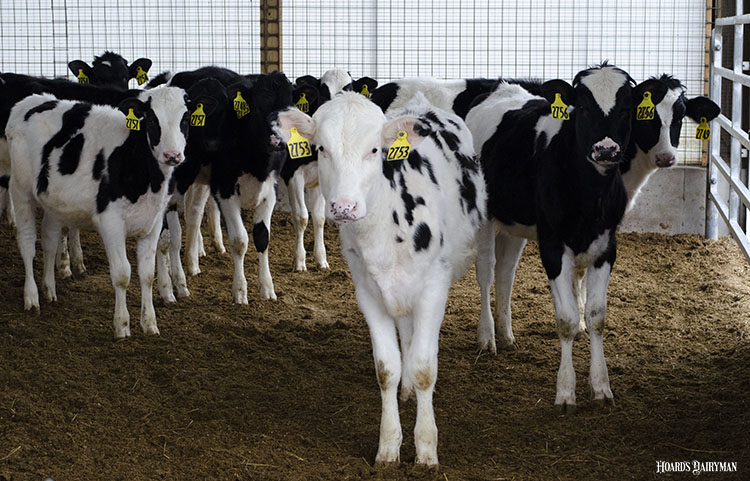
There are so many decisions to be made on a farm. While some require quick, on-your-feet thinking, other decisions are best made after a careful review of the situation and hopefully with some data to back it up.
Data was the topic of conversation during a panel discussion at the Dairy Calf and Heifer Association’s annual meeting in Prior Lake, Minn. For one of the speakers, dairy farmer Kristin Quist of Minglewood Inc., data is essential to the management of their dairy.
“Our primary goal is to be the producer of choice,” said Quist, who farms with her husband and parents near Deer Park, Wis. “For us, this means paying attention to all details, big and small. That is why we love data.”
The farm utilizes a full gamut of tools, from pen and paper to activity monitors to bolus technology, to track various indicators from the herd.
“We are driven by data, and we don’t make any decisions without it,” she continued. “How can you quantify a decision if you don’t have data to back it up?”
Justin Graham, the veterinarian for a multi-site dairy based in southern Georgia named Brooks Co. Dairy, agreed with the need for information.
“We place a lot of emphasis on data,” Graham shared. “Every dollar spent should generate a return, and we need data to make those smart decisions.”
As for specific data that helps them manage their dairies, both speakers talked about collecting calf weights.
Quist said they used to not be able to collect birth weights until 4 days of age, when the calves were moved to their autofeeder barn. She explained that it wasn’t a true birth weight, but they were able to work with that number. When their bull calf buyer changed their payment structure and had a different rate for calves over 80 pounds at birth versus those that were under, Quist needed a way to capture calf weights sooner. A scale was placed in the maternity area, and now they can weigh every calf before it is moved into the warming room.
As for gathering weaning weights, that job used to require two to three people, and it was not a favorite task of anyone on the calf team. That’s because their scale set up wasn’t efficient, Quist noted. Now that they found where to place the scale, their main calf feeder can work with 20 to 30 calves in an hour, weighing them, putting in another ear tag, and taking a genomic sample.
“It took a while to work out the best logistics for our facilities and where to put the scale to make it work,” she said. “Once we figured out where to put the scale, it was much easier.”
Making the process easy to complete was important for Graham as well. Employees on their farm were skeptical at first to start collecting this weight data for fear it would be a difficult task, but Graham explained that it can be made fairly easy.
At Brooks Co. Dairy, they have scales right in their maternity unit to capture birth weights. Then, as calves are moved out of the hutches, a modified trailer with a scale inside is used to weigh the weaned calves. Using tablets, RFID tags, and Dairy Comp 305, the weight data is easily recorded.
“When we first started, they were really hesitant, but once we put this stuff in place, it became really easy and now it’s second nature,” Graham said of their employees’ acceptance of the protocols.
Both Quist and Graham agreed that they would like more weight data from their herd. If there’s a way to easily do so, both felt there would be benefits from being able to track weights on their mature cows in addition to their calves and heifers.








